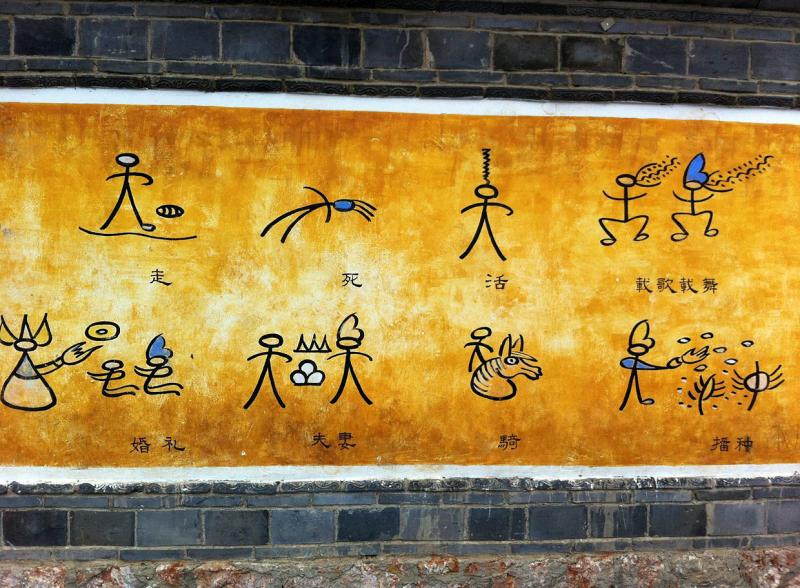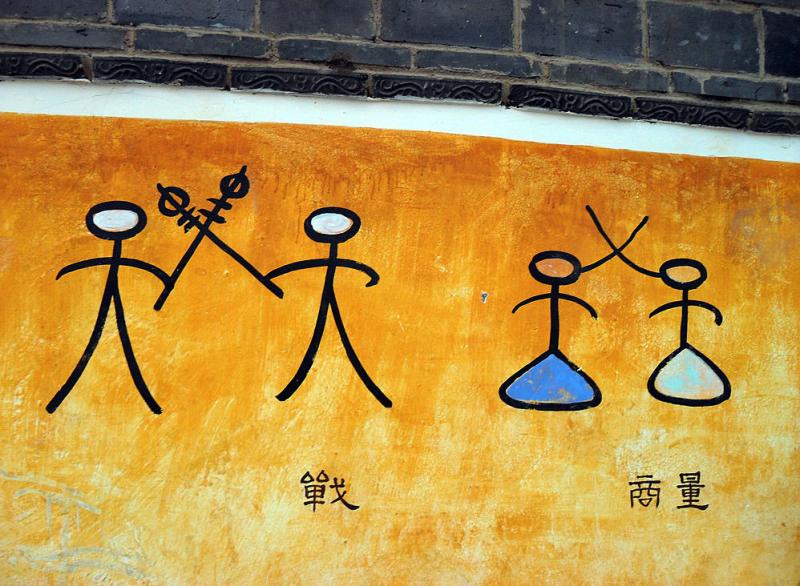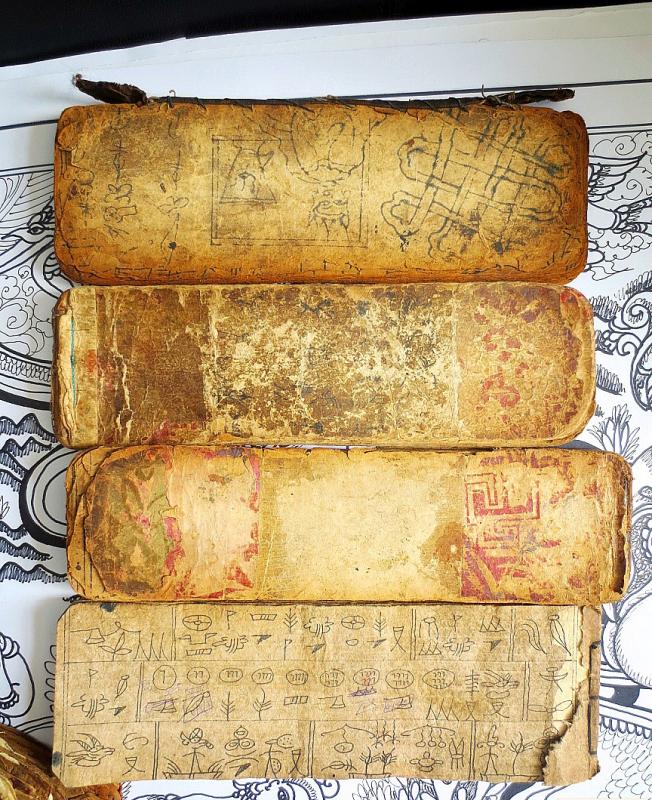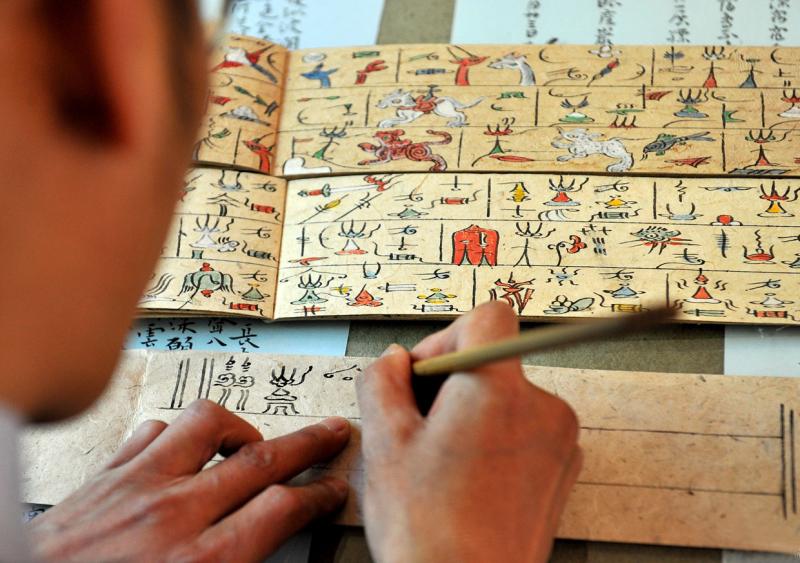Could you read these picture-like characters below? Such pictographs have being used by the Naxi people in Lijiang city of China's Yunnan province for more than 1,000 years. There kept a systematic complete written pictographic language from their splendid Dongba culture, namely Dongba script.

Dongba script of the Naxi people is a kind of pictogram used to write scriptures by "Dongbas", the priests of Dongba Religion in history. Historical records show that they were used as early as the 7th century, during the early Tang Dynasty. It is the only living pictography in the world today.
There are about 1,400 picture symbols in the Dongba script. At first glance, their writings are more like drawing little figures - "to hold" is represented by a man holding a smaller man. And, they are also incredibly logical - straight lines drawn between people indicates "fight", while entwined lines represent "discuss". But far from being simplistic, some pictograms are also used for their phonetic values.

Overall, there left about 30,000 scriptures written in pictographic Dongba scripts. They are not interpretable by ordinary folk; and only Dongba priests can translate scriptures from pictographs. Dongba scriptures are known as the encyclopedia of Naxi ancient society, recording in detail their history, tradition, literature, and much more.

Lijiang and the surrounding area are home to the Naxi people for thousands of years. The Naxis are the only people in the world who have recorded their own culture with pictographic language across centuries. And thus, their Dongba culture has been placed on UNESCO’s list of World Memory Heritage in 2013.
